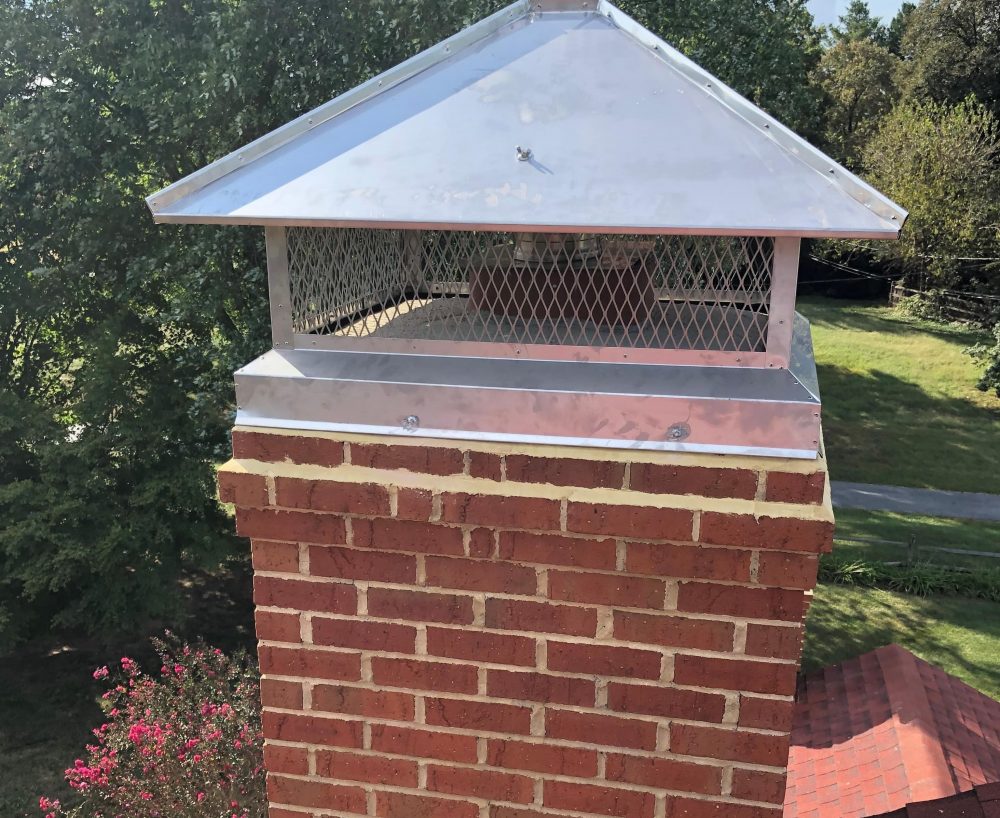Keep Your Fireplace Clean and Your Home safe
With the wintry weather of the season, many people prepared their annual chimney inspections and cleaning to make sure their fireplace was ready and safe to operate. However, that may not just be enough. Factors such as how often you light the fireplace may make you need additional cleaning and such, but do not worry, there are things you can do to keep your chimney safe between professional cleanings.
Verify that the top of your chimney flue cap is in place.
The flue cap is the opening at the top of your chimney, it has a mesh screen that allows smoke to escape, preventing any animals or debris from getting in, it also helps in the prevention of downdrafts, which can send smoke and carbon monoxide inside. It is a crucial component of the chimney and being exposed to all of these it is not exempt from wear and tear and even in extreme weather conditions it could be that the chimney cap will fall or be blown off of the building exposing you to the external elements its to prevent. To avoid this, it’s always good to check if your chimney cap is in place and do the job between cleanings.

Trim If Necessary
Trees that are too close to your chimney can cause safety hazards and if they get too close it is possible that their roots will get into the mortar of your chimney and detach it from the structure. Not only is this a safety risk, but it could also cause damage to your fireplace so to avoid this, it’s good to check if the trees around your chimney are healthy and safe and be sure to keep your chimney away from trees by at least 4.5 meters (15 feet).
Check And Remove Extra Ashes
When ashes are left in excess in your fireplace, it can cause corrosive build-ups that could lead to blockage of the flue (the part of the chimney that removes smoke from your home). Ashes themselves are not dangerous or a fire hazard, but when they get stuck and no longer have a place to go, this is a problem. When doing a checkup if you notice there is an excess of ashes that almost reaches the grate, make sure to remove the excess. To do so make sure your fireplace has had more than half a day to cool off. Then, take off the grate and set it aside. It’s okay to scoop the ashes into a metal container when the coals are no longer hot. Lastly, vacuum or sweep any debris left in your fireplace.
Keep Your Firebox and Grate Clean
To clean your firebox and grate you must always remember to wear a face mask and eye goggles to not breathe or receive any of the soot and ashes. When burning wood, the combustion emits gases that are corrosive, making it important to clean the firebox and grate of your fireplace, this will prevent any build-up of soot. Soot can be detrimental to your chimney system, which will need to be cleaned out more frequently than it would without the build-up.

The most common way to clean a firebox is with oven cleaner or other types of caustic cleaners. This usually works because they remove the soot from your fireplace and the cracks and crevices where it hides. You may use any all-purpose cleaning solution and a medium-bristle brush on the inside masonry walls of the firebox to remove ash, stains, and residues that are stuck to them. After sweeping or vacuuming away debris in the fireplace, clean the interior masonry walls with an all-purpose cleanser and a medium-bristle brush.
You may also use the same cleaning solution to clean the andirons and grate, but it’s best to do it outside to avoid stains on your floor. Just before you replace the grate make sure to spread up to an inch of ash to boost your fire
If you already have water damage or mold growth in your chimney,
you need to call a professional to fix the problem.
Click HereBurn The Right Kind of Wood
You should always burn seasoned firewood. Seasoned firewood is dried out and seasoned for a minimum of six months. This minimizes the amount of moisture in the wood, which will cause it to burn slower and reduce the creosote build-up rate. If you are purchasing firewood, make sure it burns well and is not green or freshly cut. Green wood does not burn as easily as seasoned wood because of the moisture, this makes your wood supply go faster than usual and reduces the heat output.
